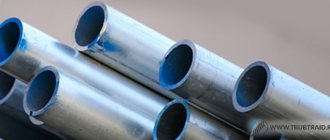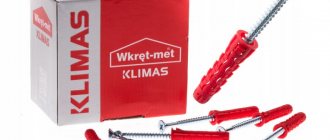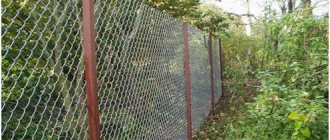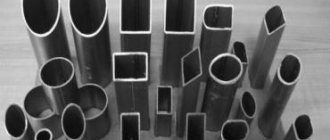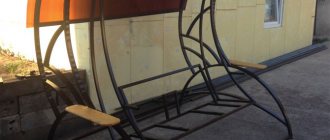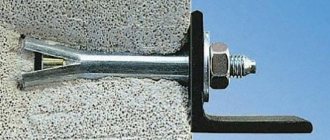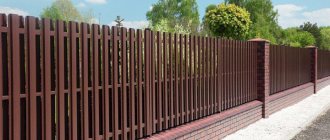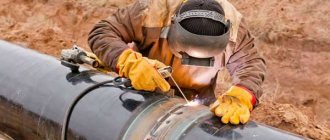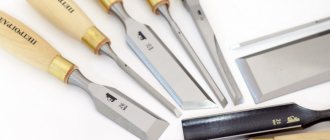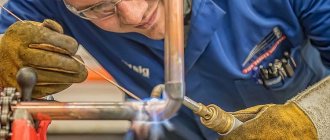Chimney on the pipe – a type of additional roof covering elements, which are additional parts necessary for the normal functioning of the roof. Similar elements also include snow guards, weather vanes, ventilation outlets, gutters and base deflectors. Each of the elements performs not only a decorative function, so you cannot do without them on the roof. The same applies to the chimney - an element that must be installed at the top of the pipe.
We advise you to study in more detail about the roof drainage system: “Organized or unorganized drainage for a home – which one to choose and why.”
What does a chimney look like on a pipe: design and dimensions
Modern chimneys for brick pipes have many different names. They are often called caps, umbrellas or weather vanes. The latter were originally intended to install a weather vane - a device that rotates under the influence of the wind. From a distance, chimneys look like small roofs. Most often in plan they have a square or rectangular shape.
Design of a classic chimney chimney
The dimensions of the chimney for a brick pipe depend on its dimensions. Experts note that the correct cap should completely cover the chimney. This means that along the perimeter the chimney should protrude beyond the pipe.
The dimensions of the chimney are determined by the type of chimney laying, since the cross-sectional dimensions depend on it. Based on the number and size of bricks, you can calculate the parameters of the pipe itself and use them to select a suitable cap.
Options for laying a brick pipe with dimensions
For safe operation of the roof, we recommend that you study in more detail: “Calculating the number of snow retainers on the roof.”
Where can you use a chimney?
- When installing home ovens. The chimney is suitable for houses heated with wood or peat, but here additional care must be taken to install spark arresters. They are made of stainless steel and are made in the form of a mesh with cells of 5x5 or 6x6 mm.
- For installation of fireplaces.
- When installing heating boilers. Smokers for flue pipes have a special ventilation hole that ensures the free exit of combustion products.
- When equipping the house with a ventilation system. In this case, the cap serves as the head of the ventilation pipes. It enhances draft and increases the efficiency of natural ventilation of the home.
Please note: spark arresters are also required if shingles, shingles, reeds or other flammable materials were used in the construction of the roof.
Chimneys on several pipes
Differences from weathervane, umbrella, head and cap
Functionally, the listed elements and the chimney are completely different devices. They are often confused due to their similar appearance. But there are some differences in their functions:
- Wind vane. It is a special design that can rotate. Due to such movements, the weather vane accelerates the air near the pipe, preventing it from getting inside and enhancing the removal of smoke from the pipe.
- Umbrella. Externally it is a cone-shaped cap. Used only for protection against rain and snow, intended for square and round pipes.
- Header. This is the name given to the complex of all elements installed on top of the pipe to protect it. These can be chimneys, caps, and trim.
- Cap. Brackets are attached to it, to which the protective elements are then fixed. The cap decorates and protects the neck of the pipe itself.
Deflector size calculations
Before you begin making a chimney deflector, you need to create a working drawing that will indicate all the dimensions of the device. And for this it is necessary to correctly calculate the height of the deflector, the diameter of the inlet pipe and the cap.
Special tables contain information on the dimensions of devices for standard chimneys.
size table
| Channel diameter (internal), mm d | Deflector height, mm N | Diffuser width, mm D |
| 120 | 145 | 241 |
| 140 | 167 | 280 |
| 200 | 241 | 400 |
| 400 | 481 | 800 |
| 500 | 600 | 1000 |
If you need to calculate the size of the device for a non-standard chimney structure, then you can use the generally accepted formula:
- Deflector height = 1.6 (1.7)×d.
- Cap width = 1.7 (1.8)×d;
- Diffuser width = 1.2 (1.3)×d.
d – internal diameter of the smoke exhaust channel.
Important! To obtain the required values, preliminary measurements of the internal diameter of the chimney pipe will be required.
Functions of a chimney chimney
The chimney prevents hot air from getting back into the chimney and prevents icicles and ice from appearing on the chimney. When installed on ventilation ducts, the device provides intensive air exchange. What other tasks does the chimney perform:
- Provides protection from rain, hail and snow. A large amount of moisture can literally “lock” the draft.
- Protects the brick pipe from destruction due to exposure to precipitation. To do this, the hood is equipped with grooves to remove condensate that forms on the metal surface due to contact with hot smoke or air if the smoke hood is installed on a ventilation duct.
- Prevents foreign objects from entering the chimney, as well as small animals or birds, which often weave their nests in such places.
- Increases traction. For this, both regular caps and special deflectors (aerodynamic caps) are used. They allow you to increase traction by about 20%.
The decorative function of chimneys should not be underestimated. They help complete the appearance of the chimney and the house as a whole, complementing the design of the roof.
Unusual chimney for a pipe
Please note: the chimney is very important in ensuring the safety of your home. Due to foreign objects entering the pipe, the free flow of air is stopped, which leads to the spread of smoke and carbon monoxide indoors. This is fraught with serious poisoning of the body and even more tragic consequences.
How does a deflector work?
A deflector is an aerodynamic device that works due to the Bernoulli effect, known in the field of aerodynamics. The cap on top of the chimney divides the air flow and thereby creates vortex currents. As a result, a zone with low pressure is created near the exit from the pipe, and air always tends from an area of high pressure to an area of low pressure. As a result, there is an increase in traction.
Structurally, the deflectors consist of 2 cylinders: the upper one in the shape of a truncated cone and the lower one. The smoke, depending on the direction of the wind, comes out into the upper or lower channel. The deflector is also protected from above by a cap.
Please note: even a regular cap helps increase traction. But deflectors, being specially designed to increase traction, give a more significant effect.
Methods for removing icing from an air duct
Provide air intake from the room
When air from the room enters the combustion chamber, fuel will burn, and when hot combustion products are released into the street, the frozen area will warm up. Most turbocharged boilers are equipped with additional points for installing separate supply and exhaust systems. Based on the passport data of your boiler, determine where to install the plug for the supply pipe. Open it slightly so that there is a slight suction of air from the room, and turn on the boiler. Leave the lid in this position until the environment warms up.
Reduce delta t
If the boiler operates without special programmers or regulators, then it turns on and off according to the temperature difference (delta t) between the supply and return lines of the heating circuit. In programmable models, delta t can be adjusted. To prevent freezing of the coaxial chimney in winter, set the minimum permissible delta t value. In this case, the time between stopping and turning on the boiler will decrease. It is advisable to carry out the activity at temperatures below - 10 0C. During this period, avoid turning on the heating equipment using the programmer or thermostat.
Increase the power of the heating device
As the boiler power increases, the temperature of the exhaust gases will increase, which will heat up the entire coaxial pipe more strongly. At the same time, gas consumption will increase slightly, but the problem will disappear. The boiler passport describes the procedure for setting its power. This is usually done using a low pressure gauge (U-shaped), with the equipment operating at maximum power. The photo below provides information on the placement of ports for connecting a U-shaped pressure gauge and adjusting nuts on the Sit Sigma 845 gas valve.
Placement of ports for connecting a U-shaped pressure gauge and adjusting nuts on the Sit Sigma 845 gas valve.
Setting up gas equipment without special training is a dangerous activity. If you have never encountered adjusting gas flow on a gas valve, then it is better to invite a specialist for these purposes.
Some professionals adjust the burner flame by eye; it should barely touch the heat exchanger.
Change in coaxial pipe design
This type of pipe must be installed with an inclination towards the street to drain condensate that forms on the inner wall of the air channel due to sudden temperature changes between the removed, heated gas and the external environment. Sometimes water accumulation occurs due to severe deformation of the extreme part of the air duct. Good results in removing icing are achieved by making holes in the lower outer part of the pipe or cutting it by 15 - 20 centimeters, while the length of the inner pipe remains unchanged.
Holes for draining condensate.
You don’t have to cut the outer pipe, but by removing the tip, lengthen the inner chimney by the same 15 - 20 centimeters.
Insulation of the outer part of the air duct
When the outer part of the chimney is insulated with mineral wool, at least 50 mm thick, with a protective casing or penofol, at least 10 mm thick, the coaxial air duct does not freeze even at -40 0C.
The listed measures have been tested in practice and will help heating equipment operate smoothly in the winter season.
Types of chimneys for pipes
From the photo of chimneys for brick pipes you can see that these accessories can have different shapes:
- tent,
- two- or four-slope,
- flat,
- semi-cylindrical,
- spire-shaped
- four- or multi-pincer.
Important: flat chimneys are rational to use in warm climates where there is no precipitation in the form of snow. Such caps are more suitable for installation on flat roofs.
Types of chimney smoker
Chimneys also differ in their overall configuration. The following caps are found on the market:
- Standard. Traditionally they consist of the cap itself and the skirt element, which is necessary for fastening. Suitable for almost all chimneys, including false pipes, therefore they are used more often than other types.
- With protective grille. They differ from previous models by the presence of a metal mesh. Suitable if the fireplace or stove is used very rarely. In this case, the grate will protect the pipe from birds that could build a nest in it, as well as from debris.
- With a hinged lid. Facilitates the process of cleaning the chimney from soot and repairing the chimney.
- With increased traction. To increase traction, the device can be equipped with a double lid or a forced draft function. Such chimneys are installed where enhanced exhaust air removal is required.
Common models of chimneys
- Universal pitched.
A pitched chimney is the most common and simplest option, suitable for both chimneys and ventilation pipes.
Universal smoke vent
- With outlet for fireplace or boiler room chimney.
It has an open design with an additional free outlet for exhaust gases.
Cap with outlet for fireplace or boiler room chimney
- With closed outlet for fireplace or chimney.
Unlike the previous version, it has a closed free outlet for exhaust gases. Suitable for installation on boiler pipes.
Weather vane with closed outlet
- Gable shape.
The gable smoke vent looks very original. Suitable for barbecue pipes or summer kitchens, for square-section fireplace and stove chimneys. In addition to an interesting design, it is characterized by good ability for through ventilation.
Gable-shaped chimney
- With a semicircular pommel.
The top of the weather vane is made from a sheet of metal that has been bent to form a half-cylinder shape. This configuration provides maximum through ventilation around the perimeter and at the ends. Well suited for pipes with a rectangular plan.
Semi-cylindrical chimney
- Angular.
The weather vane can be made with any number of sides at the base. In addition to L-shaped ones, there are also T-shaped caps.
Corner chimney
- Pagoda.
One of the most sophisticated and attractive shapes with curved radial edges. Particularly relevant in the presence of other roofing decor.
Dymnik-pagoda
- Gothic.
Perfectly complements roofs that have spiers or towers.
Dymnik-gothic
- Aeration, or two-level.
This is a current solution for pipes with problematic draft. Due to the second tier, the weather vane provides additional support for the smoke under the hood, and thanks to through ventilation, exhaust gases are easily removed from the chimney.
Aeration chimney
A special variety - smoke vane
One of the varieties of the chimney is a weather vane, which, in addition to the cap, is also equipped with a top in the form of a flat element made of thin metal. The decorative element of the weather vane not only shows the direction of the wind, but also increases draft by directing the smoke to the leeward side.
The weather vane rotates due to a bearing, which periodically requires lubrication. Being decorative, the element can be made in a variety of forms - in the shape of an eagle, dragon or falcon head, etc.
Operating principle of a weather vane
Types of chimneys by material of manufacture
Depending on the material, there are the following types of chimneys:
- Copper. They have a long service life (about 50 years), during which they retain their original appearance. Over time, copper develops a patina, becoming similar to antique products.
- Steel. Not too durable - with proper installation and regular maintenance they will last about 10 years.
- Made from stainless steel. More durable than steel. Their service life reaches 30 years.
- Made of zinc and titanium alloy. As durable as copper. Serve for 50 years.
Copper caps are considered the most functional, but it is important to remember that upon contact with other metals, copper begins to actively oxidize, which is why it is destroyed over time. To prevent this, it is necessary to use fasteners made entirely or at least partially from copper.
A special group consists of forged chimneys . They have a particularly pronounced decorative function. Such products are often produced individually, including individual designs or personal sketches of the customer. In order for the element to fit into the architecture of the house, it is necessary that the forging have a pattern similar to the pattern on the wicket, gate or fence.
Note: if you plan to heat the house using wood, it is better to install an unpainted chimney. Under the influence of high temperatures, painted steel will quickly fade and become covered with a layer of soot.
Where to buy or order
If you are looking for where to buy a ready-made forged roof product or order its individual production according to your personal sketches, we suggest taking a look at the corresponding section of our blacksmith catalog. The section “Where to buy and order forged chimneys” contains companies offering items that are simple in design and original in execution. All products are of high quality, wide range and reasonable prices.
In conclusion, it is worth noting that forged caps last much longer than metal or galvanized ones due to the technical characteristics of forged metal. Thanks to the decoration with openwork elements, they give the buildings uniqueness and originality. If you want to draw attention to your home, be sure to install a wrought iron weather vane on your chimney.
Tips for choosing the right smoker
When choosing a smoke hood for a chimney pipe , first of all it is necessary to take into account not the aesthetics, but the functionality of the accessory. The following tips will be useful here:
- For regions with a lot of snow in winter, a chimney in the form of a small roller roof with a large slope is suitable. Snow comes off very easily from this design.
- In zones with cold climates, it is more rational to install wave-bending chimneys. The roof slope must have a slope of at least 40°.
- The cap must be selected taking into account its shape. For round ones, round umbrellas are suitable, for rectangular and square ones - in the form of small pitched roofs.
- For chimneys up to 5 m high, caps made of heat-resistant materials are more suitable: stainless steel or copper. They are resistant to oxidation, so they will last longer.
Please note: chimneys for sandwich chimneys must be equipped with a special skirt that will cover the insulation.
With your own hands
You can make a roof chimney yourself if you stock up on consumables, equipment and free time. To manufacture it you will need the following equipment and tools:
- metal scissors;
- mallet;
- hammers of different shapes;
- metal corners for fastening.
The materials you can use are sheet metal and ready-made forged elements.
In addition, performers who do not have the relevant knowledge are recommended to obtain it. To do this, you need to master forging operations. Long-term training in blacksmithing in an educational institution, on your own, in master classes, ensures the acquisition of a wide range of skills.
Reference. You can purchase decorative parts for chimneys and other metal products from employees of manufacturing and trading enterprises, which are collected in the “Where to buy forged elements” section.
Assembly of the chimney (hood), artistic forging, welding and painting with your own hands
Some secrets are presented in the following video.
- The chimney is made from four triangles, which are welded to form a pyramid-shaped product.
- To decorate the product, a peak with a texture is attached to the top.
- To avoid distortion, a homemade box (conductor) is used, located on the table.
Features of installing a chimney on a pipe
When installing the chimney, it is very important to ensure that it is securely fastened, since it must withstand strong gusts of wind. If the cap blows off, then at best it will damage the roof, and at worst it will lead to injury to residents or passers-by, since the structure itself is quite heavy.
For fastening you can use:
- Self-tapping screws and dowels - for pipes made of lightweight brick.
- Anchors – for a cap of large mass.
The chimney is fixed to the topmost row of bricks. At the first stage, it is necessary to prepare holes for screws or anchors. They are tapped directly into the cement joints of the masonry. It is better to do this according to pre-made markings. When the holes are ready, you can attach the cap itself. Before placing the dowels inside, it is recommended to dip them in cement mortar - this way they will be fixed more securely. After installing the dowels, all that remains is to secure the element with self-tapping screws.
Scheme for installing a weather vane on a pipe
